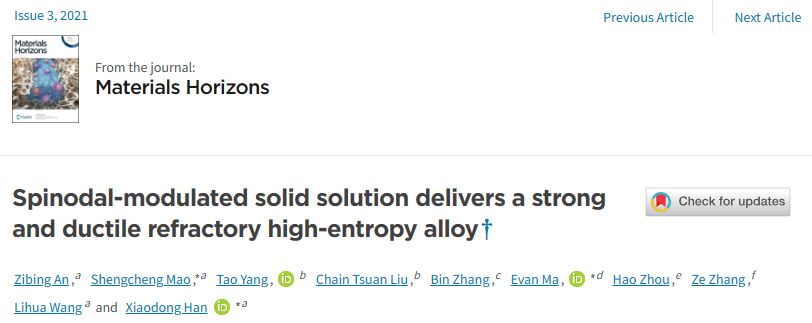
Body-centered-cubic (BCC) refractory high-entropy alloys (RHEAs) are being actively pursued due to their potential to outperform existing superalloys at elevated temperatures. One bottleneck problem, however, is that these RHEAs lack tensile ductility and, hence, processability at room temperature. The strategy previously invoked to sustain ductility in high-strength HEAs is to manage dislocation movements via incorporating dispersed obstacles; this, however, may also have embrittlement ramifications. Here, a new strategy is demonstrated to achieve ductile BCC HfNbTiV, via decomposing the BCC arrangement (β phase) into a β(BCC1) + β*(BCC2) arrangement via spinodal decomposition, producing chemical composition modulations and, more importantly, elastic strain on a length scale of a few tens of nanometers. The periodically spaced β*, with large lattice distortion, is particularly potent in heightening the ruggedness of the terrain for the passage of dislocations. This makes the motion of dislocations sluggish, causing a traffic jam and cross-slip, facilitating dislocation interactions, multiplication, and accumulation. Wavy dislocations form walls that entangle with slip bands, promoting strain hardening and delocalizing plastic strain. A simultaneous combination of high yield strength (1.1 GPa) and tensile strain to failure (28%) is achieved; these values are among the best reported so far for refractory high-entropy alloys.
Link:https://pubs.rsc.org/ru/content/articlelanding/2021/mh/d0mh01341b